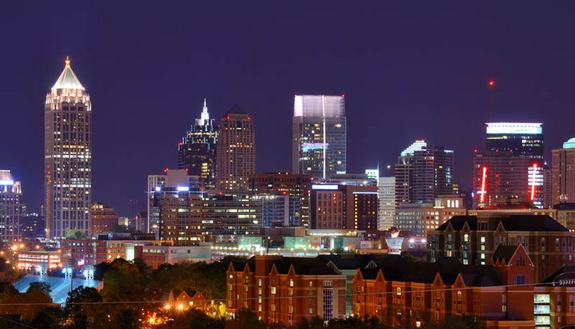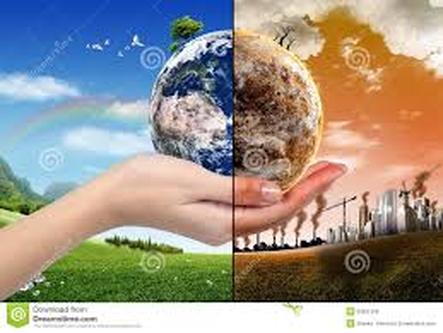"Everyone is a genius. But if you judge a fish on its ability to climb a tree, it will live its whole life believing that it is stupid."
-Albert Einstein
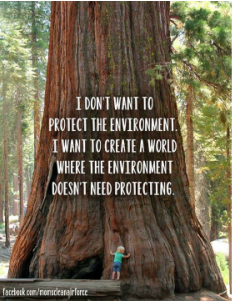
Welcome to Ms. Stephens Environmental Science Class
Email: [email protected]
Class website: www.astephensscience.com
Tutorial: 3:45-4:45 Wednesdays, or schedule an appointment.
Announcements:
The class website contains lesson plans, notes, and study links. Please check the lesson plans to see what you missed, and for make-up work.
Notice to Parents & Students:
The class website is regularly updated for each unit. Students are expected to check the class website prior to the next class when they are absent to not get behind. There are many study resources available as well!
Course Syllabus: Environmental Science Course syllabus
** Please download the Course Syllabus by clicking the link above and confirm you have read the course syllabus by completing the google form in your google class room. Codes for the classrooms are in the syllabus.
Mission Possible at Maynard Jackson High School
Prezi of Class procedures and rules
Class Procedures Quiz
Give me 5 Standards of EVS
Project: About me/One small thing
Video: Before the Flood
Video thinking guide
Online Multiple Intelligence Test- Save As... to save the graph of your results, print, email me, or save using copy ScreenShot and paste in a word doc. Bring results to class.
Email: [email protected]
Class website: www.astephensscience.com
Tutorial: 3:45-4:45 Wednesdays, or schedule an appointment.
Announcements:
The class website contains lesson plans, notes, and study links. Please check the lesson plans to see what you missed, and for make-up work.
Notice to Parents & Students:
The class website is regularly updated for each unit. Students are expected to check the class website prior to the next class when they are absent to not get behind. There are many study resources available as well!
Course Syllabus: Environmental Science Course syllabus
** Please download the Course Syllabus by clicking the link above and confirm you have read the course syllabus by completing the google form in your google class room. Codes for the classrooms are in the syllabus.
Mission Possible at Maynard Jackson High School
Prezi of Class procedures and rules
Class Procedures Quiz
Give me 5 Standards of EVS
Project: About me/One small thing
Video: Before the Flood
Video thinking guide
Online Multiple Intelligence Test- Save As... to save the graph of your results, print, email me, or save using copy ScreenShot and paste in a word doc. Bring results to class.

Unit 1: Human Impact: Cause and Effect
(August 1-Oct. 6)
SEV4. Obtain, evaluate, and communicate information to analyze human impact on natural resources.
a.Construct and revise a claim based on evidence on the effects of human activities on natural resources.
b. Design, evaluate, and refine solutions to reduce human impact on the environment including, but not limited to, smog, ozone depletion, urbanization, and ocean acidification.
Essential Questions:
1. How does pollution affect land, air, and water?
2. How does air pollution affect water resources?
Intro to Land Resources: (August 1-12, 2022)
SWBAT obtain, evaluate, and communicate information to analyze human impact on natural resources IOT construct and revise a claim based on evidence on the effects of agriculture, forestry, ranching, mining, urbanization, and pollution on land and organisms.
(Lesson 1.1)
Unit 1 Vocabulary List
Text References:
Chapter 1 Section 1 pgs. 14–15
Chapter 1 ppt
Chapter 1 guided notes
Engage:Georgia Land Use interactive map
Questions:
1.What are the key patterns in land use change in Georgia?
2.What are the causes and effects of these patterns?
Lab Activity:
Complete a mining lab using cookies.
Link: http://www.earthsciweek.org/classroom-activities/cookie-mining
This lab demonstrates for students the considerations that must take place when using land as a natural resource.
Cookie Sheet:
Mining for Chocolate activity
http://www.earthsciweek.org/classroom-activities/cookie-sheet
Homework:
Evaluate: Choose one of the following writing prompt to summarize the importance of land and organism conservation.
Prompt 1: It is estimated that we are losing 137 plant, animal and insect species every day due to the deforestation of rainforests. That means we are losing over 50,000 species every year. The reasonthe land is being cleared is for the timber, for mining operations and to provide grazing areas for large scale cattle ranching. What do you think can or should be done to stop the deforestation?
Prompt 2:
A tract of land is being sold in your community. Fictitious bidders include the National Park Service, a children’s hospital, a shopping-mall developer, an oil drilling company, and the U.S.Armed Forces. Choose one and become a lobbyist for one that group writing arguments on behalf of their interests.
Introduction to Water Resources: (August 14-25)
SWBAT obtain, evaluate, and communicate information to analyze human impact on natural resources IOT construct and revise a claim based on evidence on the effects of fishing, water use, desalination, and waste water treatment on water and organisms. (Lesson 1.2)
Lesson 1.2 (Water)
Classroom Activity:
Overfishing Link to Activity: https://serc.carleton.edu/eslabs/fisheries/4.html
Link to Article: https://www.nefsc.noaa.gov/history/stories/groundfish/grndfsh1.html#art
Hands-On Lab:
Water Quality testing in the classroom
Virtual Lab option:
Students will engage in a virtual lab to test water and document their findings for each sample.
Link: http://www.glencoe.com/sites/common_assets/science/virtual_labs/CT04/CT04.html
Guiding Questions:
1.What other issues can water have besides too much lead?
2.How does the treatment process address issues with the water quality?
Homework:
Use the following writing prompt to summarize the importance of water and organism conservation.
Prompts:
Water is life. There is the same amount of water now on Earth as when it was first created. For us,it’s easy...
we turn on the tap and there it is. Yet in Africa and Asia, women and children spend about 6 hours a day and walk an average of 3.7 miles a day just to collect water, according to water.org. This is time they could be spending in school or caring for their families. Think of five
ways you and your family could conserve water so that everyone can do their part.
Introduction to Air Resources:(August 28-Sept 8)
SWBAT obtain, evaluate, and communicate information to analyz e human impact on natural resources IOT construct and revise a claim based on evidence on the effects of agriculture, forestry, ranching, mining, urbanization, and pollution on air and organisms. (Lesson 1.3)
Video: China's toxic smog
Guiding Questions:
1.What did you observe?
2.What are some of the effects of air pollution in North China?
3.Why do you think that China is so polluted?
Activity: The State of Air
Link: http://www.stateoftheair.org/
Investigation Handout: State of the Air.pdf
Begin to reason and understand that there are multiple issues factors that cause air quality issues. This activity will help you understand that there are multiple factors and that some of the factors have a greater impact than others.
Guiding Questions:
1.What is ground level ozone and what effects does it have?
2.What are particulates and are all particulates harmful?
Video Reference:
https://youtu.be/iCbylY2XyEs(Overuse of Land)
https://youtu.be/DwcW12J1FFA(Urbanization)
https://youtu.be/vWEAd4HLV-g(Overfishing)
https://youtu.be/-V4D77N3bZc(Overfishing: Planet Ocean)
https://youtu.be/11oawjSncYM(Air Pollution Video)
https://youtu.be/Z5Db5ranTXw(Acid Rain)
Human Impact: (Sept. 11-22)
SEV4. Obtain, evaluate, and communicate information to analyze human impact on natural resources.
b. Design, evaluate, and refine solutions to reduce human impact on the environment including, but not limited to, smog, ozone depletion, urbanization, and ocean acidification
SWBAT design, evaluate, and refine solutions IOT to reduce human impact on the environment including, but not limited to, smog, ozone depletion, urbanization, and ocean acidification. (Lesson 2.1)
Essential Questions:
1. What information did you use from prior lessons to decide which problem you consider the most important to reduce?
2.Which resource (land, water, air) is most effected by smog, ozone depletion, urbanization,and acidification?
Chapter 2 Section 3 pgs. 38–42
Video: What do Environmental Engineers do?
Guided questions:
1.How would you describe the job of an environmental engineer?
Performance Assessment: Design and Engineer a process that solves a problem related to human impact on land, air, water, and organisms.
Project Resource:
Water Filtration Project
Claim-Evidence-Reasoning (CER)
Claim: Statement that answers the question.
Evidence: Information that supports the claim. Scientific data comes from observations in natural settings or controlled experiments, measurements, or valid scientific sources. Personal information comes from opinions, beliefs, and everyday experiences.
Reasoning: The justification that links the evidence to the claim. It explains why the evidence supports the claim. Scientific reasoning includes a scientific principle.
Informational Texts Resources:
News Articles:
http://www.smithsonianmag.com/travel/is-the-livestock-industry-destroying-the-planet-11308007/(Land Use and Agriculture)
http://apps.seattletimes.com/reports/sea-change/2013/sep/11/pacific-ocean-perilous-turn-overview/(Ocean pollution)
http://www.foodispower.org/pollution-water-air-chemicals/(AllPollution and food)
http://grist.org/basics/bad-acid-trip-a-beach-bums-guide-to-ocean-acidification/(Acidification article)
https://ensia.com/features/what-does-ocean-acidification-mean-for-sea-life/?viewAll=1(Ocean Acidification and Sea Life)
http://www.motherjones.com/politics/2013/05/arctic-ocean-rapidly-getting-more-acidic/(Ocean Acidification)
Human Impact: Food and Agriculture (Sept. 25-Oct.6)
SEV4. Obtain, evaluate, and communicate information to analyze human impact on natural resources.
c.Construct an argument to evaluate how human population growth affects food demand and food supply (GMOs, monocultures, desertification, Green Revolution).
SWBAT obtain, evaluate, and communicate information to analyze human impact on natural resources IOT construct an argument to evaluate how human population growth affects food demand and food supply. (Lesson 3.1)
Essential Questions: What affect does scarcity of food have on food quality?
Vocabulary (Lesson 3)
Agriculture and Farming Activities
Farming for the Future Activities
The complex causes of famine resource doc
Famine Research Project
Famine Research Project Rubric
GMO Article genetically_modified_food_benefits_and_disadv.205133728.doc
Unit 1 Summative Assessment: October 12/13
Unit 2: Ecology (total time 7 weeks)
2A: Ecology Pacing:
Standards: SEV1.b, d, e; SEV2.a
SWBAT: describe the flow of energy in the ecosystem IOT construct models to describe the cycling of matter and flow of energy among living and nonliving parts in an ecosystem.
Standards: SEV2.b
SWBAT: describe levels of ecological organization IOT construct an argument supported by empirical evidence that changes to physical or biological components of an ecosystem affect populations.
Essential Questions:
- How is an ecosystem organized?
- What is an ecosystem?
- How does energy flow within an ecosystem?
- How is matter recycled within an ecosystem?
- How do ecosystems change over time?
Chapter 4: The Organization of Life
Environmental Science: Holt pages 98-113
Notes:
Evolution and Ecology PPT
Chapter 4 Guided Notes
Chapter 4 - The Organization of Life - Section 1
Chapter 4 - The Organization of Life - Section 2
Chapter 4 - The Organization of Life - Section 3
Class Activities:
Abiotic vs Biotic Factors Worksheet (DOC 75 KB)
Ecosystem Worksheet (PDF 112 KB)
Ecosystem Foldable (DOC 32 KB)
Layers of the Earth Foldable Activity (PDF 2.01 MB)
Layers of the Earth WebQuest (DOCX 21 KB)
Atmosphere Foldable (PDF 198 KB)
Videos:
Biotic and abiotic factors
Lab Investigation:
Natural Selection Lab with Teddy Grahams (DOCX 37 KB)
ADI Simulation Lab Predator/Prey interaction with wolves and sheep.

Secondary Text: We will be reading this text in class.
Zoo by James Patterson
Zoo BINGO Book Club Choice Board
Zoo BINGO Book Club Reference Link
Zoo by James Patterson
Zoo BINGO Book Club Choice Board
Zoo BINGO Book Club Reference Link
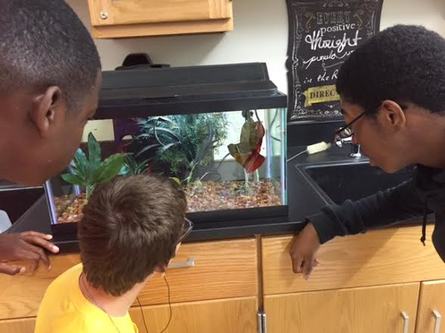
2B: Ecology:
Standards: SEV3 d,e, SEV5 c.
SWBAT: differentiate between the three types of symbiotic relationships IOT contruct an explaination that predicts patterns of interactions among organisms across multiple ecosystems.(SEV3.e)
SWBAT: demonstrate how they personally impact the ecosystem they inhabit IOT calculate their ecological footprint.(SEV5.c)
SWBAT: demonstrate how human kind has permanently changed the earth in both negative and positive ways IOT develop a feasible plan to conserve the earth.(SEV5.c)
Essential Questions:
Chapter 5: How Ecosystems Work
Environmental Science: Holt pages 124-141
Notes:
Chapter 5 Guided Notes (DOCX 596 KB)
Chapter 5 - How Ecosystems Work - Section 1 (PPT 859 KB)
Chapter 5 - How Ecosystems Work - Section 2 (PPT 904 KB)
Chapter 5 - How Ecosystems Work - Section 3 (PPT 481 KB)
Class Activities:
What's For Dinner Worksheet? (DOCX 53 KB)
Build a Food Web Activity (PDF 991 KB)
Internet Activities:
Cycling of Materials WebQuest (DOC 33 KB)
Cycling of Materials WebQuest
Lab
Owl Pellet Lab
Virtual Owl Pellet Lab
Standards: SEV3 d,e, SEV5 c.
SWBAT: differentiate between the three types of symbiotic relationships IOT contruct an explaination that predicts patterns of interactions among organisms across multiple ecosystems.(SEV3.e)
SWBAT: demonstrate how they personally impact the ecosystem they inhabit IOT calculate their ecological footprint.(SEV5.c)
SWBAT: demonstrate how human kind has permanently changed the earth in both negative and positive ways IOT develop a feasible plan to conserve the earth.(SEV5.c)
Essential Questions:
- How do organisms affect one another's survival and environment?
- How do human decisions concerning the use of resources affect the stability and biodiversity of the ecosystems?
- How do human activities disrupt the ecological balance?
Chapter 5: How Ecosystems Work
Environmental Science: Holt pages 124-141
Notes:
Chapter 5 Guided Notes (DOCX 596 KB)
Chapter 5 - How Ecosystems Work - Section 1 (PPT 859 KB)
Chapter 5 - How Ecosystems Work - Section 2 (PPT 904 KB)
Chapter 5 - How Ecosystems Work - Section 3 (PPT 481 KB)
Class Activities:
What's For Dinner Worksheet? (DOCX 53 KB)
Build a Food Web Activity (PDF 991 KB)
Internet Activities:
Cycling of Materials WebQuest (DOC 33 KB)
Cycling of Materials WebQuest
Lab
Owl Pellet Lab
Virtual Owl Pellet Lab
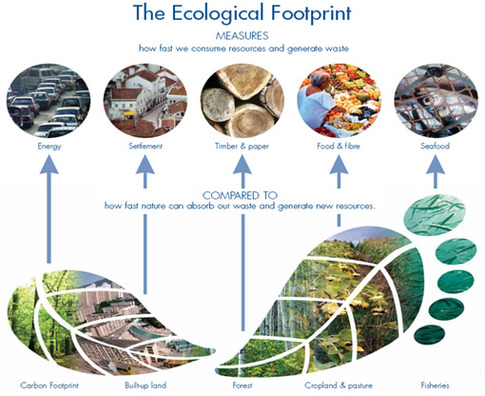
Internet Project:
Ecological Footprint Calculator
Ecological Footprint Project
Ecological Footprint Poster Rubric
Ecological Footprint Calculator
Ecological Footprint Project
Ecological Footprint Poster Rubric
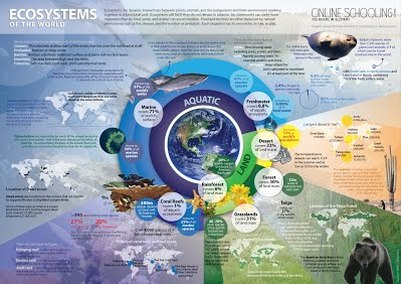
Chapter 6: Biomes
Environmental Science: Holt pages 152-182
Standards: SEV2 c, d
SWBAT: construct climatograms IOT identify major terrestrial biomes.(SEV2.c)
SWBAT: describe the major aquatic or terrestrial biomes IOT explain how human involvement and disruption of these biomes can have a long term impact on the environment.(SEV2.d)
SWBAT: describe how biomes impact biodiversity IOT explain why some biomes have been intensely exploited. (SEV2.c)
Essential Questions:
Chapter 6 - Biomes - Section 1 (PPT 636 KB)
Chapter 6 - Biomes - Section 2 (PPT 1.09 MB)
Chapter 6 - Biomes - Section 3 (PPT 892 KB)
Chapter 6 Lecture Guide (DOCX 299 KB)
Chapter 6 - Section 1 Active Reading Guide (DOC 35 KB)
Biome Brochure Reseach Project (DOC 48 KB)
World Biome Maps
University of California Muesum of Palentology - Biome Information
Missouri Botanical Garden WebSite - Lots of Information on Biomes
Blue Planet Biomes - Great Website for Research
Science Class Websites - Scroll to the bottom
Environmental Science: Holt pages 152-182
Standards: SEV2 c, d
SWBAT: construct climatograms IOT identify major terrestrial biomes.(SEV2.c)
SWBAT: describe the major aquatic or terrestrial biomes IOT explain how human involvement and disruption of these biomes can have a long term impact on the environment.(SEV2.d)
SWBAT: describe how biomes impact biodiversity IOT explain why some biomes have been intensely exploited. (SEV2.c)
Essential Questions:
- What is a biome and how are they characterized?
- What are the abiotic and biotic characteristics of the eight major biomes of the world?
- How do freshwater and marine ecosystems differ?
- What are some threats to freshwater and marine organisms?
- What are some threats to terrestrial organisms?
Chapter 6 - Biomes - Section 1 (PPT 636 KB)
Chapter 6 - Biomes - Section 2 (PPT 1.09 MB)
Chapter 6 - Biomes - Section 3 (PPT 892 KB)
Chapter 6 Lecture Guide (DOCX 299 KB)
Chapter 6 - Section 1 Active Reading Guide (DOC 35 KB)
Biome Brochure Reseach Project (DOC 48 KB)
World Biome Maps
University of California Muesum of Palentology - Biome Information
Missouri Botanical Garden WebSite - Lots of Information on Biomes
Blue Planet Biomes - Great Website for Research
Science Class Websites - Scroll to the bottom
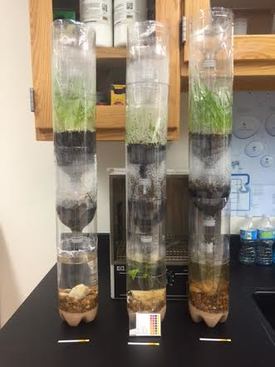
Chapter 7: Aquatic Ecosystems
Environmental Science: Holt pages 184-207
Notes:
Chapter 7 - Aquatic Ecosystems - Section 1 (PPT 760 KB)
Chapter 7 - Aquatic Ecosystems - Section 2 (PPT 880 KB)
Chapter 7 Lecture Guide (DOCX 24 KB)
Marine Ecosystems WebQuest (DOC 29 KB)
Marine Ecosystems WebQuest
Aquatic Biome Project
Environmental Science: Holt pages 184-207
Notes:
Chapter 7 - Aquatic Ecosystems - Section 1 (PPT 760 KB)
Chapter 7 - Aquatic Ecosystems - Section 2 (PPT 880 KB)
Chapter 7 Lecture Guide (DOCX 24 KB)
Marine Ecosystems WebQuest (DOC 29 KB)
Marine Ecosystems WebQuest
Aquatic Biome Project
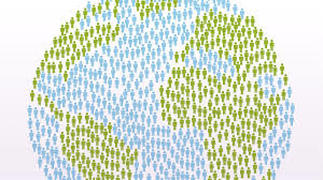
Unit 3
Populations
Chapter 8: Understanding Populations
Environmental Science: Holt
pages 210-223
Below you find the classroom assignments and PPT's used for Chapter 8, Understanding Populations. You may use this website for access to PPT's, guided notes, and make up assignments.
Chapter 8 - Section 1 (PPT 369 KB)
Chapter 8 - Section 2 (PPT 725 KB)
Chapter 8 Lecture Guide (DOCX 285 KB)
Turkey Trouble Population Graphing Lab (DOC 162 KB)
Lesson of the Kaibab Carrying Capacity Lab (DOC 73 KB)
Estimating Population Size Lab (DOC 61 KB)
Good Buddies Survey Lab Worksheet (DOC 27 KB)
Which Symbiosis is it? Part 1 (DOC 27 KB)
Which Symbiosis is it? Part 2 (PDF 23 KB)
Chapter 9: The Human Population
Environmental Science: Holt
pages 234-247
Below you find the classroom assignments and PPT's used for Chapter 9, The Human Population. You may use this website for access to PPT's, guided notes, and make up assignments.
Human Populations and Demographic changes ppt
Study guide
Chapter 9 - Section 1 (PPT 455 KB)
Chapter 9 - Section 2 (PPT 376 KB)
Chapter 9 Lecture Guide (DOCX 41 KB)
Human Population Growth Activity (DOCX 88 KB)
World in Balance - The People Paradox Video Questions (PDF 66 KB)
Human Population WordSearch (PDF 19 KB)
Human Population and Carrying Capacity WebQuest (DOCX 20 KB)
Population sampling techniques -Mark-release-recapture http://ed.ted.com/on/QgOk5DR1#review
Ocearch shark research website:
Chapter 9 Study Guide (DOCX 17 KB)
Human Population and Carrying Capacity Website 1
Human Population and Carrying Capacity Website 2
Human Population and Carrying Capacity Website 3
Human Population and Carrying Capacity Website 4
Human Population and Carrying Capacity Website 5
Human Population and Carrying Capacity Website 6
Human Population and Carrying Capacity Website 7
Human Population and Carrying Capacity Website 8
Unit 4
Populations
Chapter 10: Biodiversity
Environmental Science: Holt
pages 258-275
Below you find the classroom assignments and PPT's used for Chapter 10, Biodiversity. You may use this website for access to PPT's, guided notes, and make up assignments.
Chapter 10 - Section 1 (PPT 415 KB)
Chapter 10 - Section 2 (PPT 540 KB)
Chapter 10 - Section 3 (PPT 369 KB)
Chapter 10 Lecture Guide (DOCX 33 KB)
Biodiversity WordSearch (DOCX 18 KB)
Chapter 10, Section 1 Active Reading Worksheet (DOC 39 KB)
Chapter 10 - Section 1 Quiz WKS (DOCX 246 KB)
First Page Only
Least Wanted Poster Project (DOC 52 KB)
Biodiversity HotSpots WebQuest (DOCX 108 KB)
Biodiversity Bean Lab (DOC 36 KB)
Medicine Man Video Questions (DOC 26 KB)
Additional online resources:
Silent Invasion - PBS
Biodiversity HotSpots Map
Biodiversity WebQuest
Populations
Chapter 8: Understanding Populations
Environmental Science: Holt
pages 210-223
Below you find the classroom assignments and PPT's used for Chapter 8, Understanding Populations. You may use this website for access to PPT's, guided notes, and make up assignments.
Chapter 8 - Section 1 (PPT 369 KB)
Chapter 8 - Section 2 (PPT 725 KB)
Chapter 8 Lecture Guide (DOCX 285 KB)
Turkey Trouble Population Graphing Lab (DOC 162 KB)
Lesson of the Kaibab Carrying Capacity Lab (DOC 73 KB)
Estimating Population Size Lab (DOC 61 KB)
Good Buddies Survey Lab Worksheet (DOC 27 KB)
Which Symbiosis is it? Part 1 (DOC 27 KB)
Which Symbiosis is it? Part 2 (PDF 23 KB)
Chapter 9: The Human Population
Environmental Science: Holt
pages 234-247
Below you find the classroom assignments and PPT's used for Chapter 9, The Human Population. You may use this website for access to PPT's, guided notes, and make up assignments.
Human Populations and Demographic changes ppt
Study guide
Chapter 9 - Section 1 (PPT 455 KB)
Chapter 9 - Section 2 (PPT 376 KB)
Chapter 9 Lecture Guide (DOCX 41 KB)
Human Population Growth Activity (DOCX 88 KB)
World in Balance - The People Paradox Video Questions (PDF 66 KB)
Human Population WordSearch (PDF 19 KB)
Human Population and Carrying Capacity WebQuest (DOCX 20 KB)
Population sampling techniques -Mark-release-recapture http://ed.ted.com/on/QgOk5DR1#review
Ocearch shark research website:
Chapter 9 Study Guide (DOCX 17 KB)
Human Population and Carrying Capacity Website 1
Human Population and Carrying Capacity Website 2
Human Population and Carrying Capacity Website 3
Human Population and Carrying Capacity Website 4
Human Population and Carrying Capacity Website 5
Human Population and Carrying Capacity Website 6
Human Population and Carrying Capacity Website 7
Human Population and Carrying Capacity Website 8
Unit 4
Populations
Chapter 10: Biodiversity
Environmental Science: Holt
pages 258-275
Below you find the classroom assignments and PPT's used for Chapter 10, Biodiversity. You may use this website for access to PPT's, guided notes, and make up assignments.
Chapter 10 - Section 1 (PPT 415 KB)
Chapter 10 - Section 2 (PPT 540 KB)
Chapter 10 - Section 3 (PPT 369 KB)
Chapter 10 Lecture Guide (DOCX 33 KB)
Biodiversity WordSearch (DOCX 18 KB)
Chapter 10, Section 1 Active Reading Worksheet (DOC 39 KB)
Chapter 10 - Section 1 Quiz WKS (DOCX 246 KB)
First Page Only
Least Wanted Poster Project (DOC 52 KB)
Biodiversity HotSpots WebQuest (DOCX 108 KB)
Biodiversity Bean Lab (DOC 36 KB)
Medicine Man Video Questions (DOC 26 KB)
Additional online resources:
Silent Invasion - PBS
Biodiversity HotSpots Map
Biodiversity WebQuest
Unit 5: Pollution: Water, Air, and Land
Chapter 11: Water
Environmental Science: Holt
pages 288-313
Below you find the classroom assignments and PPT's used for Chapter 11, Water. You may use this website for access to PPT's, guided notes, and make up assignments.
Chapter 11 - Section 1 (PPT 1.59 MB)
Text Resource:
Chapter 11 Section 2 pgs. 296–303
Chapter 11Section 3 pgs. 304–313
Chapter 11 Lecture Guide (DOCX 31 KB)
"What is a Watershed" Internet Activity (DOCX 30 KB)
Water Pollution Stations with Case Studies
Project based learning Assessment Activities:
Students will choose one of the activities from The Water Project lesson.
http://thewaterproject.org/resources/lesson-plans/hand-washing-hangups
Rubrics forAssessment:
/uploads/4/0/7/3/40734789/midterm_performance_assessment_skit_rubric.docx
/uploads/4/0/7/3/40734789/midterm_performance_assessment_pamphletrubri.docx
/uploads/4/0/7/3/40734789/midterm_performance_assessment_song_rubric.docx
/uploads/4/0/7/3/40734789/midterm_performance_assessment_tippy_tap_rubri.docx
Be a Volunteer Health Worker:
Students choose an activity from the list below. Groups may be needed for some activities.
Create a Skit:
Your skit will be used to teach a group of adults about germs and the importance of hand washing. The tricky part is that not everyone speaks or understands English in a lot of countries. So you have to use pantomime or other ways of communicating beyond words.
Create a Pamphlet:
In some places people still don't know how to read but they still have to learn about disease. One way that is used to teach people is pamphlets with lots of pictures. Create a pamphlet that can be used anywhere in the world to show people how and when to wash their hands.
Write a Song:
Children learn new languages a lot easier than adults so in some places the children know more English than their parents. Write an original song for children that teaches them how to properly wash their hands.
Design Your Own Tippy Tap:
We've seen people use all sorts of things - like a hollowed out gourd with a pen casing - to create tippy taps from whatever materials they have available. Using only materials in the classroom and/or your home, design your own tippy tap. We will be installing it on the roof; to be used by those working in the garden.
http://www.tippytap.org/videos
Jigsaw Class Activity:
The Water Project -Dirty Water...So What? Understanding all of the different ways that water can cause problems in a society can be a challenge. Complete this jigsaw activity based off of the 4 effects components from the water project websites (Health, Hunger, Poverty, and education)
Student Links:
Health: http://thewaterproject.org/health.asp
Hunger: http://thewaterproject.org/hunger.asp
Poverty: http://thewaterproject.org/poverty.asp
Education: http://thewaterproject.org/education.asp
Water, Air, and Land
Chapter 12: Air
Environmental Science: Holt pages 324-339
Chapter 12 Sections 1 pgs. 325–330
Chapter 12 Section 2 pgs. 331–335
Chapter 12 Section 3 pgs. 336–339
Chapter 12 - Section 1 PPT
Chapter 12 - Section 2 PPT
Chapter 12 - Section 3 PPT
Chapter 12 Lecture Guide
Chapter 12 Study Guide
Air Pollution and Asthma Project
Unit 6
Water, Air, and Land
Chapter 13: Atmosphere and Climate Change
Environmental Science: Holt
pages 350-369
Below you find the classroom assignments and PPT's used for Chapter 13, Atmosphere and Climate Change. You may use this website for access to PPT's, guided notes, and make up assignments.
Chapter 13 - Section 1 (PPT 1.07 MB)
Chapter 13 - Section 2 (PPT 464 KB)
Chapter 13 - Section 3 (PPT 563 KB)
Chapter 13 Lecture Guide (DOCX 35 KB)
Six Degrees that Could Change the World (DOC 28 KB)
Atmosphere WebQuest
Chapter 13 Study Guide (DOCX 20 KB)
Unit 6
Water, Air, and Land
Chapter 14: Land
Environmental Science: Holt
pages 380-395
Below you find the classroom assignments and PPT's used for Chapter 14, Land. You may use this website for access to PPT's, guided notes, and make up assignments.
Chapter 14 - Section 1 ppt
Chapter 14 - Section 2 ppt
Chapter 14 - Section 3 ppt
Heat Island Activity
Chapter 14 Lecture Guide
Chapter 14 poster session
Land, and Agriculture project
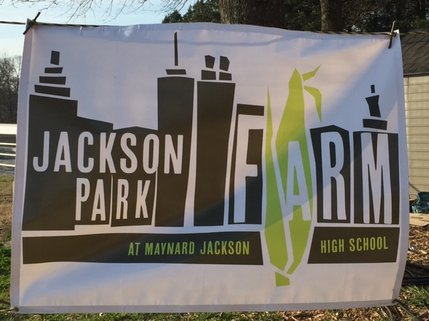
Unit 6: Food and Agriculture
Chapter 15 Section 1 pgs. 406–411
Chapter 15 Section 2 pgs. 412–422
Chapter 15 Section 3 pgs. 423 - 428
Ch 15 PowerPoint.ppt
Study Guide for Chapter 15.doc
Chapter 15 Section 1 pgs. 406–411
Chapter 15 Section 2 pgs. 412–422
Chapter 15 Section 3 pgs. 423 - 428
Ch 15 PowerPoint.ppt
Study Guide for Chapter 15.doc
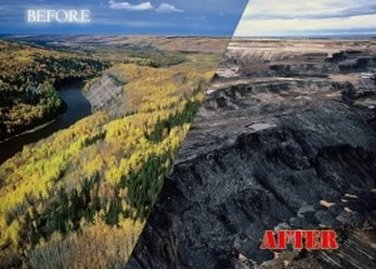
Unit 5: Mineral and Energy resources
Mining Introduction ppt
Modern day gold mine video
Georgia's forgotten gold rush-villa rica, Ga
Chapter 16 Section 1 pgs. 441–444
Chapter 16 Section 2 pgs. 445–450
Chapter 16 Section 3 pgs. 451–454 (Top of Page)
Class Powerpoints:
Chapter 16 ppt section 1-3
Chapter 16 notes
Activity:
Land Use Activities
Land Use Planning Project
Chapter 16 active reading
Chapter 16 quiz
Mining Introduction ppt
Modern day gold mine video
Georgia's forgotten gold rush-villa rica, Ga
Chapter 16 Section 1 pgs. 441–444
Chapter 16 Section 2 pgs. 445–450
Chapter 16 Section 3 pgs. 451–454 (Top of Page)
Class Powerpoints:
Chapter 16 ppt section 1-3
Chapter 16 notes
Activity:
Land Use Activities
Land Use Planning Project
Chapter 16 active reading
Chapter 16 quiz
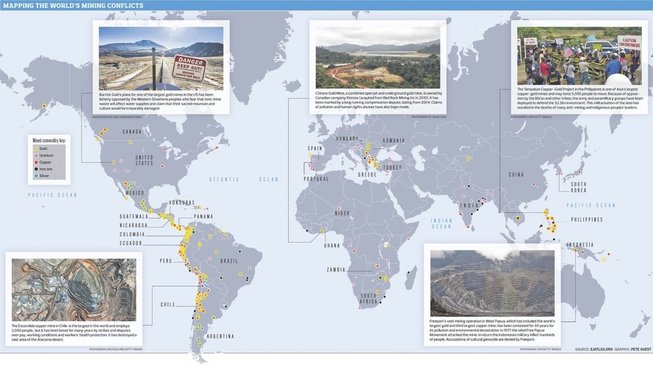
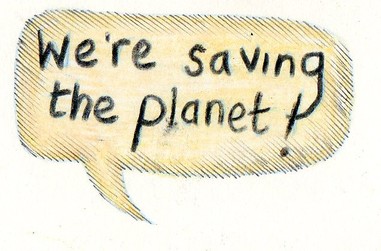
Chapter 17: Nonrenewable EnergyCh 17-18 ppt
Ch 17 Quick Check docx
Asthma Project WebQuest Instructions Website
Rubric for Asthma Project
Airborne Particulate Lab
Study guide for nonrenewable Resources docx
Chapter 18: Renewable EnergyCh 18 Con Review wksht.doc
Ch 18 Crit think wksht.doc
Ch 18 Map Skills.doc
Ch 18 Study guide for Renewable Resources docx
Ch 17 Quick Check docx
Asthma Project WebQuest Instructions Website
Rubric for Asthma Project
Airborne Particulate Lab
Study guide for nonrenewable Resources docx
Chapter 18: Renewable EnergyCh 18 Con Review wksht.doc
Ch 18 Crit think wksht.doc
Ch 18 Map Skills.doc
Ch 18 Study guide for Renewable Resources docx
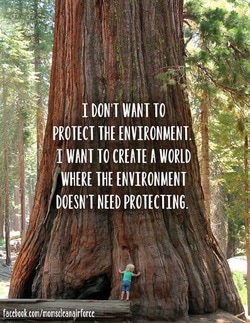

The Lorax (original)
The Lorax and sustainability packet (Final Exam Performance Assessment )
The Lorax Essay slideshare
The Lorax versus Truax essay examples, Truax pdf.
Essay Rubric
The Lorax and sustainability packet (Final Exam Performance Assessment )
The Lorax Essay slideshare
The Lorax versus Truax essay examples, Truax pdf.
Essay Rubric

